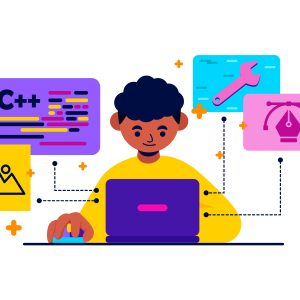In the world of programming, where lines of code translate into complex functionalities and innovative solutions, understanding syntax is akin to mastering the language of computers. Syntax serves as the set of rules and conventions that dictate the structure, format, and composition of programming languages, enabling developers to communicate instructions to computers effectively.
Defining Syntax
At its core, syntax refers to the grammatical rules and principles that govern the arrangement and combination of symbols, keywords, and characters in a programming language. Just as human languages have syntax rules for constructing sentences, programming languages have syntax rules for writing code. These rules define how statements, expressions, and commands are structured and organized to convey specific meanings and achieve desired outcomes.
Elements of Syntax
Syntax encompasses various elements, each playing a vital role in shaping the structure and semantics of code:
- Keywords: Keywords are reserved words in a programming language that have predefined meanings and cannot be used for other purposes. Examples include “if,” “else,” “for,” and “while,” which are fundamental building blocks for constructing control flow statements and defining program logic.
- Operators: Operators are symbols or characters used to perform operations on operands, such as arithmetic, comparison, logical, and assignment operations. Examples include addition (+), subtraction (-), equality (==), and logical AND (&&), which facilitate computation and data manipulation.
- Variables: Variables are symbolic names that represent memory locations used to store data values. Syntax rules dictate how variables are declared, initialized, and manipulated within a program, including naming conventions, data types, and scope.
- Expressions: Expressions are combinations of variables, constants, operators, and function calls that evaluate to a single value. Syntax rules govern the structure and syntax of expressions, ensuring coherence and correctness in mathematical and logical computations.
Syntax in Action
Understanding syntax is essential for writing clean, readable, and error-free code. Consider the following example in Python, a popular programming language:
python

In this code snippet, the syntax rules of Python dictate how variables are declared (using the “=” operator), how arithmetic operations are performed (using the “+” operator), and how output is displayed (using the “print” function).
Syntax Errors
Syntax errors occur when code violates the rules and conventions of a programming language, resulting in compilation or runtime errors. Common syntax errors include misspelled keywords, missing or misplaced punctuation, and improper use of operators. Developers use syntax highlighting and debugging tools to identify and rectify syntax errors, ensuring code correctness and functionality.
Importance of Syntax
Syntax serves as the foundation of programming languages, providing a standardized framework for expressing algorithms, data structures, and computational logic. Mastery of syntax empowers developers to write efficient, maintainable, and scalable code, facilitating collaboration, code reuse, and software engineering best practices. Moreover, understanding syntax enables developers to adapt to new languages and technologies, fostering continuous learning and professional growth.
Cracking the Code
In conclusion, syntax is the bedrock of programming, shaping the way developers communicate with computers and create innovative software solutions. By adhering to syntax rules and conventions, developers can write code that is clear, concise, and comprehensible, enabling effective problem-solving and software development. Aspiring programmers must invest time and effort in mastering syntax, as it lays the groundwork for success in the dynamic and ever-evolving field of programming.




